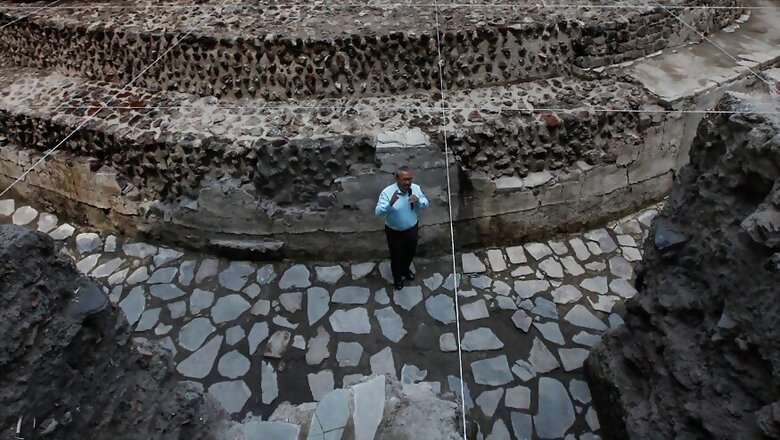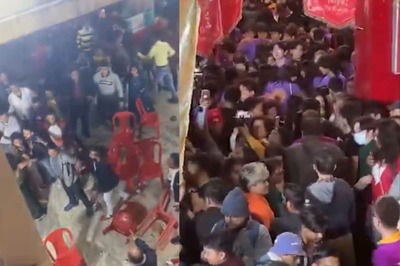
views
Plans to expand a hotel in Mexico City have been put on hold after archaeologists unearthed a 1400s-era temple to the Aztec wind god Ehecatl and a ceremonial ball court under the property.
The find could spark nightmares for any squeamish hotel guests: The carefully severed neck bones of 32 people were found in a ceremonial pit next to the ball court.
The find announced Wednesday by archaeologist Eduardo Matos was made in excavations done in 2009-2016. Matos, of the National Institute of Anthropology and History, noted that the hotel owns the property and will be allowed to build above the ruins once the dig is completed.
But Matos said the pilings and foundations of the new building will have to be carefully placed so they don't disturb the ruins that are near the Templo Mayor site, Mexico City's main temple complex. The round temple structure and the stair-like structure of the ball court will remain open below the hotel for the public to visit.
The temple to Ehecatl was probably built in 1486-1502. Only about half has been excavated because the remainder extends under a neighboring building.
The ceremonial ball game frequently ended with players being sacrificed. Archaeologist Raul Barrera pointed to a covered spot where the neck bones were found.
"There was a small oval-shaped well, within which there were 32 sets of cervical vertebrae — necks — from young adults, and there were also children," Barrera said. "Above them, a series of skull fragments had been ceremonially arranged. Surely, these people were decapitated."
The project is a riveting example of how difficult it is to build in Mexico, where layers of history lie atop one another.
The ruins were unearthed under the floor of a 1940s wing of the hotel that was severely damaged in the 1985 earthquake. The building's facade, seriously tilting with cracks showing, has been shored up and preserved.
Inside the property, everything else from the 1940s structure was demolished and cleared out after the earthquake, but just under the floor's surface the foundations of a colonial house built soon after the 1521 Spanish conquest were found. Those colonial foundations, in turn, rest almost directly atop the Aztec ruins.
The hotel owners had to pay for the multiyear dig and delay their construction plans for years. Some of their guests still likely will have to sleep above an Aztec burial ground.
"We like it, because the (new) building will protect the ruins, so no rain, or sun, or hail will get in," Matos said of the hotel project. "So (the ruins) will be perfectly protected and lighted, and the best thing is that (the property owners) will pay for it, not us."



















Comments
0 comment